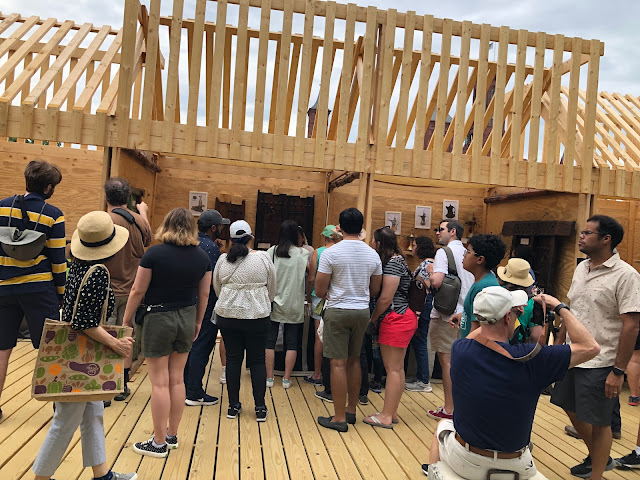By Joanna Vidal
My Experience at the Smithsonian Folklife Festival: Representing UAE Heritage
The Smithsonian Folklife Festival, established in 1967, is one of the largest cultural events in the world. It takes place annually on the National Mall in Washington, D.C., and typically runs from June 22nd through the 4th of July, overlapping with U.S. Independence Day. After a two-year pause due to the COVID-19 pandemic, the festival returned in 2022 with renewed energy—and I was honored to be part of it.
That year’s theme was “UAE: Living Landscape | Living Memory,” with the United Arab Emirates as the featured country. The event highlighted the UAE’s rich history, heritage, culture, and traditions. It was sponsored by several governmental organizations, most notably the UAE Ministry of Culture and Youth, and supported by the UAE Embassy to the USA.
As someone who has worked in the heritage field for nearly eight years at this time I’m written this blog, being part of this festival was a deeply personal and meaningful experience. Representing the artifacts of a country I’ve lived in and grown to love was both an honor and a responsibility.
I’ve been involved not only in handling and preserving heritage artifacts but also in researching them. My boss which is my mentor (he is a heritage collector, exhibitor historian, researcher, etc.) and I have working on many books on the history, culture, and traditions of the UAE—many of which incorporate the artifacts we study.
We arrived in Washington, D.C., on June 19th and spent the next two days preparing for the festival. It officially opened on June 23rd. Each team had their own designated area to present activities that reflected the UAE’s identity.
There was a beautiful variety of demonstrations, including:
• Traditional coffee-making
• Basket and mat weaving using palm fronds
• Henna application for women
• Arabic perfume mixing and showcasing its natural ingredients
• Falconry displays
• Arabic calligraphy workshops
• Traditional dance and music
• Pearling and honey tastings
• Poetry readings
• Fishing net and trap making
• A display of Al Falaj, the ancient Emirati water irrigation system
• Cooking demonstrations

• Antique sitting room doors and window shutters
• Traditional coffee pots, rosewater sprinklers, incense burners, and cups—symbols of Emirati hospitality
• Bedouin women’s jewelry and beauty items
• Men’s traditional accessories
Visitors to our space were fascinated and full of questions. Many were amazed by the craftsmanship of the handmade objects and expressed interest in purchasing replicas—though unfortunately, they weren’t available through the institution’s market.

A front side photo of our area while I was talking and explaining in front of many people.
One surprising aspect was the number of visitors who were unfamiliar with the UAE. Some didn’t know that Dubai and Abu Dhabi are part of the UAE, and a few even confused the country with Qatar, Oman, or Yemen. It reminded us why festivals like this matter—why it’s so important to share stories, culture, and knowledge firsthand.
This experience was a celebration of culture, but also an invitation for dialogue. It was a reminder of how much there is to learn from each other—and how powerful it can be to connect through shared traditions and stories.
Below are a few screenshots from selected websites that featured our activities.
Follow me on:
Insta: @unjoannable_m3




Comments